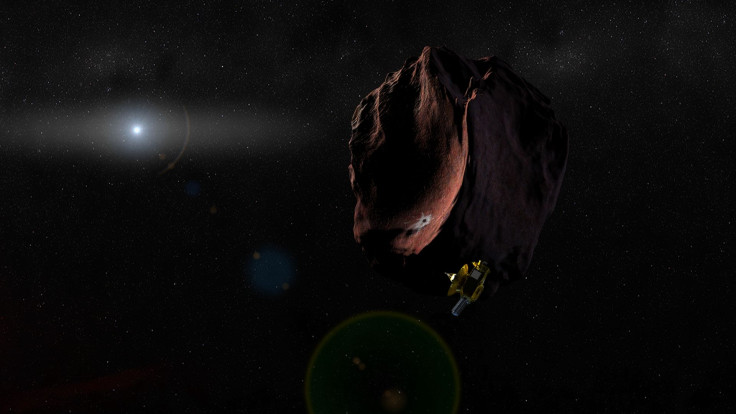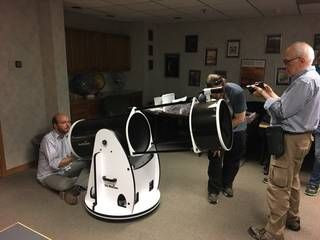Kuiper Belt Object, Target Of New Horizons Flyby, Will Be Seen From Earth By Scientists

NASA’s New Horizons spacecraft has boldly gone where few machines have gone before, having travelled a distance about 50 times farther than the Earth is from the sun, beyond the orbit of Pluto. And as it travels farther out in the solar system, it is set for a rendezvous with an object in the Kuiper Belt that is much smaller than the dwarf planet.
This object, called 2014 MU69, is thought to be only about 25 miles across, and is located over 4 billion miles from Earth. The spacecraft is scheduled to make a flyby of it on New Year’s Day 2019, traveling at the speed of 35,000 miles an hour, making it the farthest object yet encountered by a spacecraft. But long before that, scientists on Earth will get a rare chance to see the object directly. And it is not one opportunity, but three.
Read: After Pluto Flyby, New Horizons Mission Extended To Kuiper Belt
On June 3, July 10 and July 17, MU69 will pass across the face of three different stars — one on each of those days — and the consequent dimming of the light from those stars will allow scientists to get a direct look at the Kuiper Belt object (KBO). This phenomenon is known as stellar occultation, and a large team of astronomers and researchers are preparing their telescopes and cameras for those days.
“Our primary objective is to determine if there are hazards near MU69 – rings, dust or even satellites – that could affect our flight planning,” New Horizons Principal Investigator Alan Stern, of Southwest Research Institute (SwRI) in Boulder, Colorado, said in a statement Thursday. “But we also expect to learn more about its orbit and possibly determine its size and shape. All of that will help feed our flyby planning effort.”
To achieve all their objectives and to make the most of these rare opportunities, the scientists will have to be quick on their feet, quite literally, because given the KBO’s size, the occultations will last for only about two seconds each.
To make the most of the short time, researchers will spread out across the projected viewing paths in Argentina and South Africa. About 50 telescopes in different locations will see different parts of MU69’s shadow, and combining the observations will reveal information about the object’s properties, such as its shape and brightness.

However, even having a large number of telescopes on two continents is no surety of observing MU69. It was discovered only in 2014, and we don’t know much about its orbit. So the researchers are placing their equipment every few miles, in order to maximize their chances of collecting enough data to meet their objectives.
Read: New Horizons Could Help Scientists Measure Cosmic Optical Background
Cathy Olkin from SwRI, New Horizons deputy project scientist, said in the statement: “Deploying on two different continents also maximizes our chances of having good weather. The shadow is predicted to go across both locations and we want observers at both, because we wouldn't want a huge storm system to come through and cloud us out — the event is too important and too fleeting to miss.”
For the second occultation on July 10, the researchers will also enlist NASA’s Stratospheric Observatory for Infrared Astronomy. SOFIA’s place above the clouds, and its ability to maneuver itself to the center of the occultation shadow will allow it to take very useful measurements, irrespective of the weather below.
“The upcoming occultations are valuable opportunity to learn something about MU69 before our encounter, and help us plan for a very unique flyby of a scientifically important relic of the solar system’s era of formation,” Stern said.
© Copyright IBTimes 2025. All rights reserved.





















